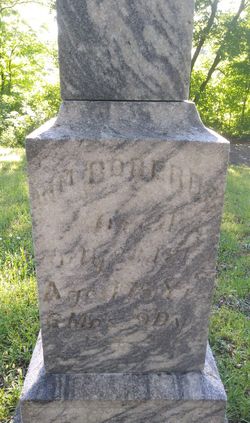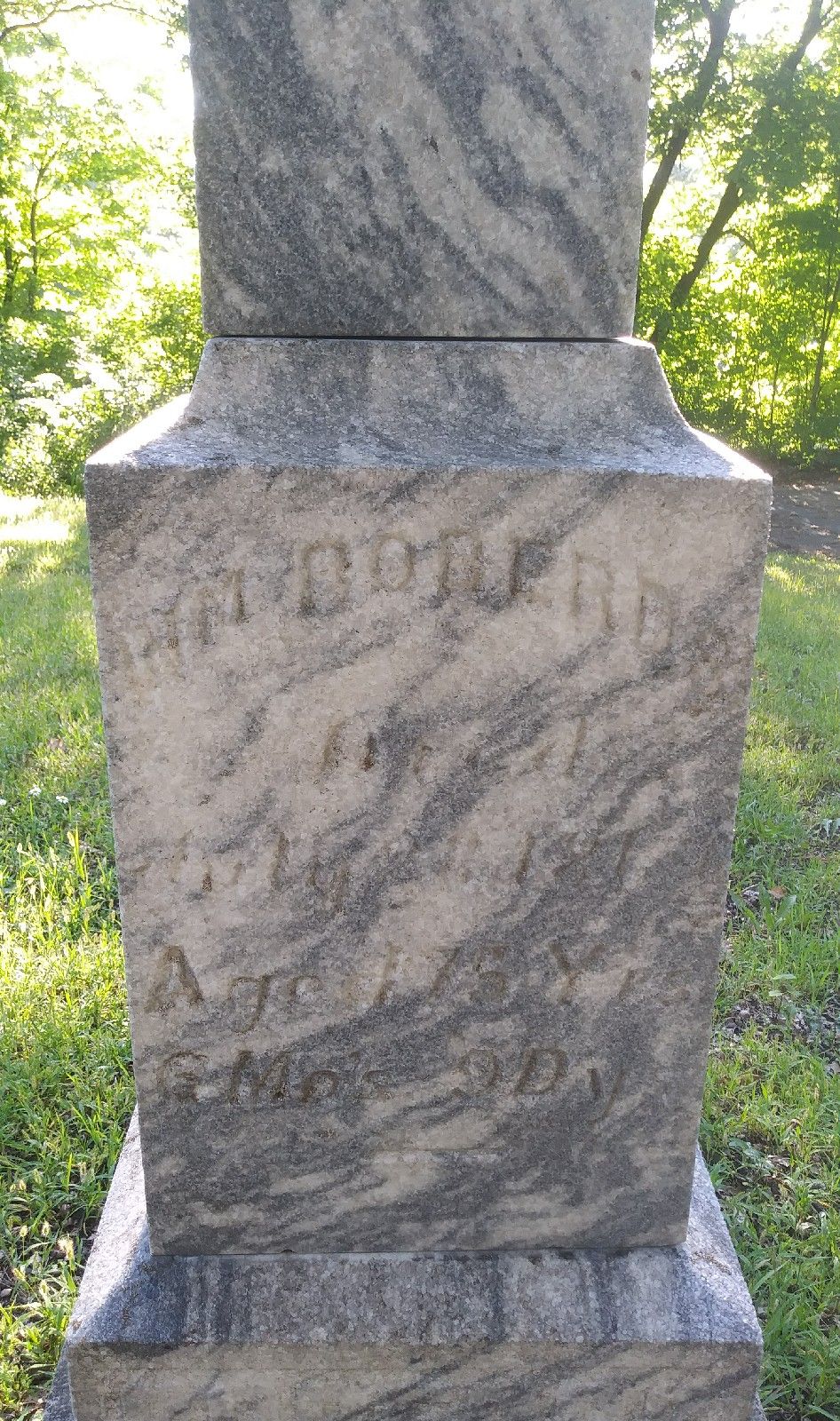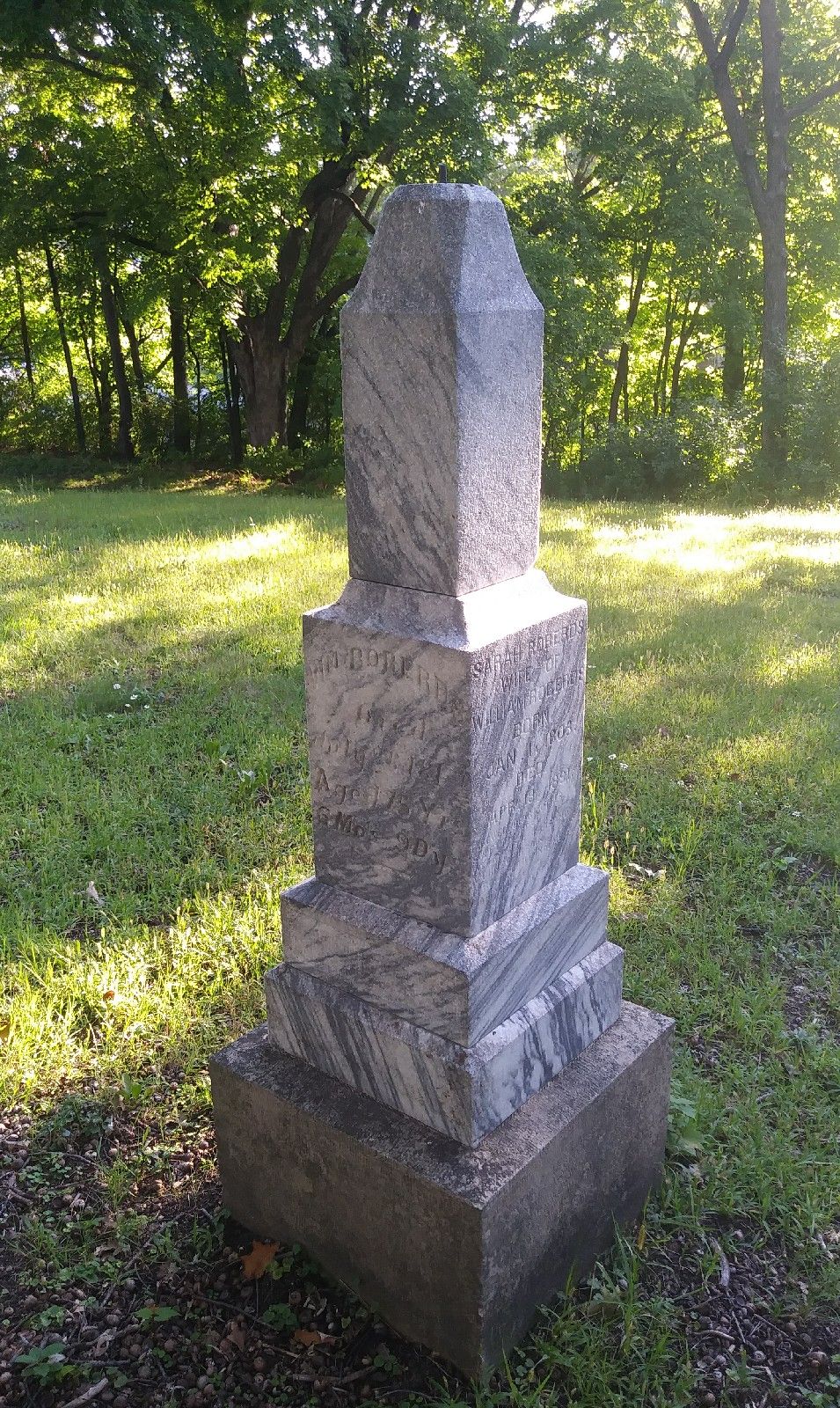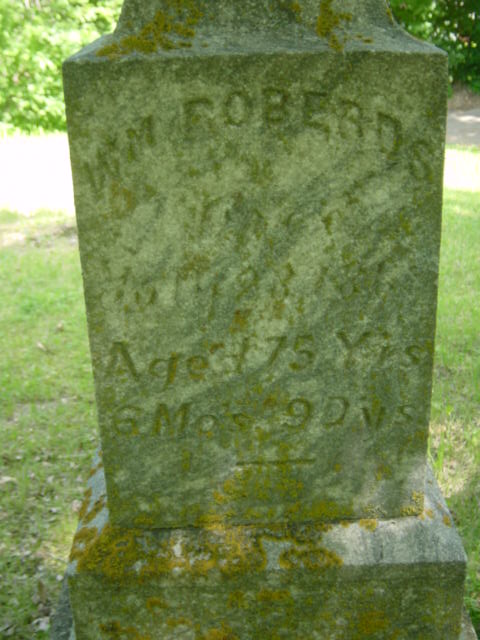William Roberds came west in a wagon train assembled in Indiana. Himself, Tom Kirk, and John Cowan, along with their families were the first white settlers at Roberds' Lake (Lake Chedeweta). They travelled by covered wagon in the same wagon train and arrived in Wells Township, Rice County, Minnesota in the spring of 1855. Before 1853 there were absolutely no white men in this area. There were no roads, no cultivated lands, no civilization; just impenetrable wilderness. This is what the first settlers faced. The wagon train had left Indiana a year earlier and had spent the winter in Iowa. When they arrived, they chose the southeast side of Lake Chedeweta for their new homes, and established a settlement there. The William Roberds family chose a spot near the creek, put up a log cabin and a year later erected a saw mill on the creek. The mill was run by water power and was equipped with an old fashioned perpendicular saw. In 1856, a run of stones, for feed, was placed in the mill and in 1858, when the firm became Roberds and Spear, a circular saw was put in. They later added a flour mill and this was the start of the Roberds' Lake Mills. In 1861, William sold both of his mills and took up farming.
Walter Dienst, born in 1896, told the story later in life of how Lake Chedeweta became Roberds' Lake. The story goes that when Bill Roberds was 62 years old, some of the other early settlers said that if he could swim across the lake, they would name it after him. He swam across it and it has been Roberds' Lake ever since.
The first blacksmith shop opened in the township was erected in 1855 by William Roberds, in section twenty-two, on the shore of Roberds' Lake. The shop was operated by his nephew, Freeman Roberds for about three years, then the business was discontinued and moved to Faribault.
William was married twice. His first wife was Sarah Bennett, who he married in 1815. They were blessed with five children, [ALL] of whom lived till adulthood. His second wife was Sarah Cochran, the widow of John Cochran, and that wedding took place in 1826. Of their seven children, five lived. The first inhabitants of the Lake Chedeweta area were the Wapcuta-Dakota indians. In a treaty, in 1851, these indians sold their lands to the white men. By agreement, the indians were allowed to remain in the area and caused much concern among the settlers as they travelled back and forth to the river. A story was told about how Mrs. William Roberds had to walk through the indian camp to get milk from a neighbor. She was very frightened as she walked through the encampment and watched the indians boiling fish. They would stop eating and watch her, but she was never harmed.
The first township meeting in Wells township was held on May 11, 1858. It was held in the log school house. Those in attendance organized the township by the election of the following officers: Thomas Kerk (Kirk) was elected as supervisor; William McCalla and Patrick O`Brien , chairmen; J.W. Cowan (John), collector; S.P. Case , clerk; T.B. Owens (Thomas Owings), assessor; William Roberds and Timothy Casey, constables; S.C. Dumham, overseer of the poor. William became a prominent citizen in the township and was very active till his death, in 1869, when a tree fell on him as he was driving by in a carriage, with a neighbor. Death ensued two days after the accident.
ROBERDS LAKE MILLS - These mills were originally started in 1855, by William Roberds, who erected a saw-mill at the outlet of the lake bearing his name, on section twenty-two. It was run by water power, and was equipped with an old-fashioned perpendicular saw. In 1856, a run of stones for feed was placed in the mill, and in 1858, the firm became Roberds & Spear. A circular saw was put in and this firm continued the mill in this shape until 1862, when they sold it to Bebee & Wood, who ran the establishment with water as the motor until 1865, when the supply of water failed and they hired a steam engine to saw up the logs on hand.
William Roberds came west in a wagon train assembled in Indiana. Himself, Tom Kirk, and John Cowan, along with their families were the first white settlers at Roberds' Lake (Lake Chedeweta). They travelled by covered wagon in the same wagon train and arrived in Wells Township, Rice County, Minnesota in the spring of 1855. Before 1853 there were absolutely no white men in this area. There were no roads, no cultivated lands, no civilization; just impenetrable wilderness. This is what the first settlers faced. The wagon train had left Indiana a year earlier and had spent the winter in Iowa. When they arrived, they chose the southeast side of Lake Chedeweta for their new homes, and established a settlement there. The William Roberds family chose a spot near the creek, put up a log cabin and a year later erected a saw mill on the creek. The mill was run by water power and was equipped with an old fashioned perpendicular saw. In 1856, a run of stones, for feed, was placed in the mill and in 1858, when the firm became Roberds and Spear, a circular saw was put in. They later added a flour mill and this was the start of the Roberds' Lake Mills. In 1861, William sold both of his mills and took up farming.
Walter Dienst, born in 1896, told the story later in life of how Lake Chedeweta became Roberds' Lake. The story goes that when Bill Roberds was 62 years old, some of the other early settlers said that if he could swim across the lake, they would name it after him. He swam across it and it has been Roberds' Lake ever since.
The first blacksmith shop opened in the township was erected in 1855 by William Roberds, in section twenty-two, on the shore of Roberds' Lake. The shop was operated by his nephew, Freeman Roberds for about three years, then the business was discontinued and moved to Faribault.
William was married twice. His first wife was Sarah Bennett, who he married in 1815. They were blessed with five children, [ALL] of whom lived till adulthood. His second wife was Sarah Cochran, the widow of John Cochran, and that wedding took place in 1826. Of their seven children, five lived. The first inhabitants of the Lake Chedeweta area were the Wapcuta-Dakota indians. In a treaty, in 1851, these indians sold their lands to the white men. By agreement, the indians were allowed to remain in the area and caused much concern among the settlers as they travelled back and forth to the river. A story was told about how Mrs. William Roberds had to walk through the indian camp to get milk from a neighbor. She was very frightened as she walked through the encampment and watched the indians boiling fish. They would stop eating and watch her, but she was never harmed.
The first township meeting in Wells township was held on May 11, 1858. It was held in the log school house. Those in attendance organized the township by the election of the following officers: Thomas Kerk (Kirk) was elected as supervisor; William McCalla and Patrick O`Brien , chairmen; J.W. Cowan (John), collector; S.P. Case , clerk; T.B. Owens (Thomas Owings), assessor; William Roberds and Timothy Casey, constables; S.C. Dumham, overseer of the poor. William became a prominent citizen in the township and was very active till his death, in 1869, when a tree fell on him as he was driving by in a carriage, with a neighbor. Death ensued two days after the accident.
ROBERDS LAKE MILLS - These mills were originally started in 1855, by William Roberds, who erected a saw-mill at the outlet of the lake bearing his name, on section twenty-two. It was run by water power, and was equipped with an old-fashioned perpendicular saw. In 1856, a run of stones for feed was placed in the mill, and in 1858, the firm became Roberds & Spear. A circular saw was put in and this firm continued the mill in this shape until 1862, when they sold it to Bebee & Wood, who ran the establishment with water as the motor until 1865, when the supply of water failed and they hired a steam engine to saw up the logs on hand.
Family Members
-
Mary "Polly" Roberds Harper
1790 – unknown
-
![]()
Martha Roberds
1795–1865
-
Sarah Roberds Adamson
1797–1855
-
![]()
Nancy Roberds Hillman
1798–1864
-
Elizabeth Roberds
1800–1800
-
Lydia Roberds Adamson
1800–1843
-
Joseph Roberds Jr
1802 – unknown
-
![]()
Phebe Roberds Harper
1804–1875
-
![]()
Elias Roberds
1807–1895
-
![]()
Thomas Roberds
1809–1891
-
![]()
Rev. Phineas Roberds
1810–1890
-
![]()
Mary Rachael Roberds Adamson
1812–1878
-
![]()
Isaiah M. Roberds
1814–1882
-
![]()
Benjamin Roberds
1817–1841
-
![]()
Anna Roberds Forehand
1815–1884
-
![]()
Timothy Roberds
1820–1872
-
![]()
Michael B. Roberds
1823–1865
-
William C Roberds
1825 – unknown
-
![]()
Elizabeth Roberds Owings
1829–1900
-
![]()
Lydia Roberds Anderson
1832–1902
-
![]()
SGT John B. Roberds
1834–1864
-
![]()
Elias Roberds
1834–1918
-
Martha Roberds McCartney
1840 – unknown
-
![]()
SGT Benjamin Roberds
1842–1865
-
![]()
Susanna Roberds McMartin
1846–1890
Advertisement
Explore more
Sponsored by Ancestry
Advertisement

























